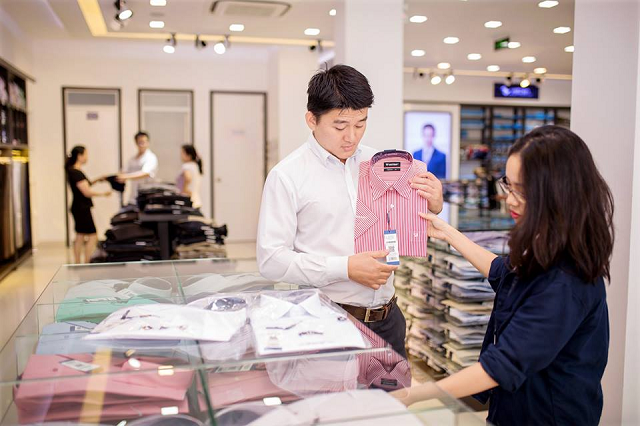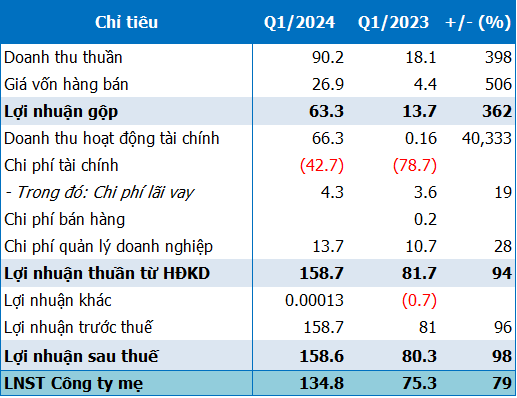In the first two months of 2024, the export picture, although showing signs of growth, has not met expectations due to difficulties in major traditional export markets such as Europe, the US, and Japan, as their purchasing power has not recovered.
During a sideline exchange at the press conference announcing the Vietnam Export Forum 2024 in Ho Chi Minh City, Mr. Nguyen Quoc Anh, Director of Duc Minh Rubber Co., Chairman of the Ho Chi Minh City Rubber and Plastic Association, stated that due to the slow recovery of the European economy and the recession in Japan, most rubber and plastic companies have not received large orders for 2024. “My company and some other companies are still able to maintain minimal orders, but some companies exporting to Europe have seen a reduction of 30%-40% in their orders. The good news is that companies exporting to the US and Asia are able to exploit niche markets and niche products, so the decrease is only about 5%-10%,” Mr. Quoc Anh explained the current situation.
The Chairman of the Ho Chi Minh City Rubber and Plastic Association cited examples of rubber and plastic companies that have successfully sold products in the Chinese market thanks to their diligent efforts in trade promotion and production of goods that are in demand. Some companies have exported plastic pipes for oil exploitation to the Netherlands. Other companies are also expected to develop by selling products to small and new markets.

Vietnamese textile companies are seeking export opportunities at a textile industry exhibition in Ho Chi Minh City |
Currently, many food, textile, wood, and handicraft businesses have started to explore niche markets such as India, the Middle East, Australia, Turkey, Canada, and China. By the beginning of 2024, some wood and furniture businesses such as Minh Thanh and Tran Duc have been promoting exports to the Middle East market, including Saudi Arabia and Dubai (United Arab Emirates). Mr. Nguyen Phuong, Director of Minh Thanh Company, believes that in the current difficult period, niche markets are the key to maintaining stability for businesses. “Dubai is experiencing strong development in housing construction. If we can tap into this market effectively, it could become a major market for the Vietnamese wood industry,” Mr. Phuong explained.
Mr. Nguyen Quoc Khanh, Chairman of the Ho Chi Minh City Handicraft and Wood Processing Association (HAWA), said that the Middle East region is being planned for the construction of mega-projects, including the NEOM project in Saudi Arabia with 4 complexes; The Mukaab project (New Murabba) worth $800 billion; the Mirror Line project with an investment capital of $1,000 billion… These projects all require high-end furniture, opening up new opportunities for major Vietnamese furniture brands.
Similarly, textile exports to niche markets have also seen strong growth in 2023. Mr. Vu Duc Giang, Chairman of the Vietnam Textile and Apparel Association, said that the Middle East market is expanding rapidly. Consumers in this region are willing to pay a high price for high-quality products. However, due to cultural diversity in the region, companies need to invest in research and understanding of culture, consumer habits, and business environments in order to offer suitable products.
|
Offering suitable products According to Mr. Nguyen Ngoc Hoa, Chairman of the Ho Chi Minh City Business Association (HUBA), due to cultural differences, religious beliefs, and consumption habits, we have not focused on exploring South American markets, Muslim countries, and India. Meanwhile, Muslim countries have good purchasing power and a strong sense of community. If one country accepts its products, other countries will easily open their doors. India has the world’s largest population and diverse religious beliefs, but relatively easy-going consumption habits. These are new “landscapes” that Vietnamese exporters need to focus on exploring. “We need to deeply understand the consumption habits, culture, and religious beliefs in order to offer suitable products and have the ability to penetrate the market. At the same time, we need to enhance sales promotion in traditional markets and build a strong export brand “made in Vietnam”,” Mr. Hoa emphasized. |
Article and photos by Phuong An











































